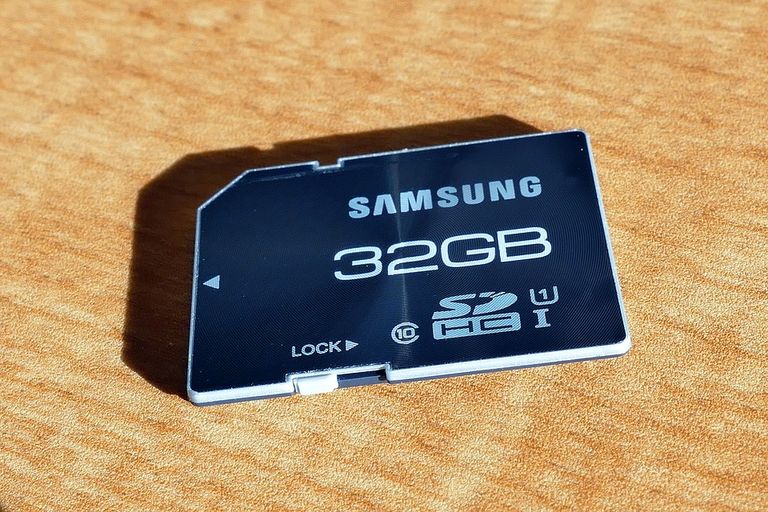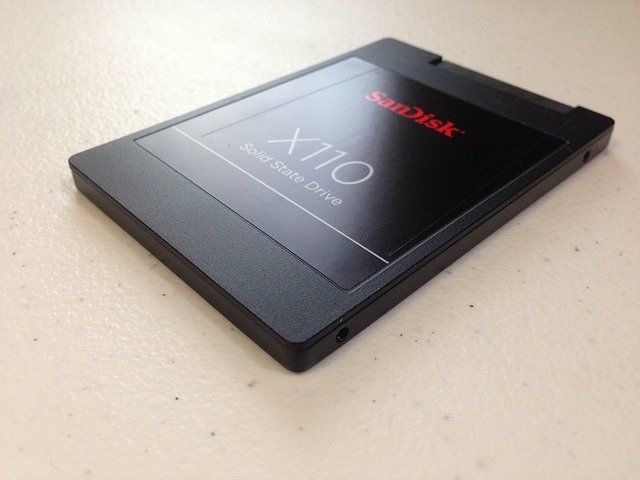Hallo zusammen,
ich habe bei meinem letzten Post doch einige Verwirrung mitbekommen und möchte hier etwas Aufklärung betreiben.
I got some confusion with my last post and would like to do some clarification here.
Welche Speichermedien sind bei einem Raspberry PI 4 möglich?
Which storage media are possible with a Raspberry PI 4?
SD-Karte
die SD-Karte ist klassisch im Einsatz eines Raspberry Pi. Hier gibt es verschiedene Möglichkeiten, dabei ist auf die Zusatzzeichen auf der Karte zu achten (Schreib- und Lesegeschwindigkeit).
SD card
the SD card is classic in the use of a Raspberry Pi. There are various options here, paying attention to the additional characters on the card (write and read speed).

Bild von InspiredImages auf Pixabay
SSD - SATA
Eine normale Festplatte die man von Computer schon kennt. Diese Festplatten haben eine Geschwindigkeit bis zu 600 MB/s.
SSD - SATA
A normal hard disk which is already known from computers. These hard drives have a speed of up to 600 MB/s.
M.2 - SATA
Diese ist ein kleine Speicherplatine, genau wie die SSD - SATA erreicht sie auch eine Geschwindigkeit bis zu 600 MB/s.
M.2 - SATA
This is a small storage board, just like the SSD - SATA it also reaches a speed up to 600 MB/s.
M.2 NVMe
Dieses ist eine Weiterentwicklung vom M.2 SATA, dieser Ist zur Zeit der schnellste SSD Speicher auf dem Markt. Eine NVMe kann von 1000 - 7000 MB/s erreichen.
M.2 NVMe
This is a further development of the M.2 SATA, which is currently the fastest SSD storage on the market. A NVMe can reach from 1000 - 7000 MB/s.
Fluch und Segen / A curse and a blessing
Das ist das Grundlegende, ganz einfach erklärt. Bei dem Raspberry PI 4 kann alles eingesetzt werden. Von der SSD-SATA bis zum M.2 NVMe Speicher, müssen leider als Externe Festplatte betrieben werden, über den USB 3.0 Anschluss. Das bedeutet für den M.2 NVMe Speicher, dass er seine volle Geschwindigkeit nicht ausschöpfen kann. Den der USB 3.0 kann nur bis zu 5 GB/s übertragen und da ein M.2 NVMe bis 7 GB/s schnell sein kann, wird er ausgebremst.
That's the basics, explained very simply. With the Raspberry PI 4, anything can be used. From the SSD-SATA to the M.2 NVMe storage, unfortunately have to be operated as an external hard drive, via the USB 3.0 port. This means that the M.2 NVMe storage cannot use its full speed. USB 3.0 can only transfer up to 5 GB/s and since M.2 NVMe can be up to 7 GB/s, it is slowed down.
Lohnt es sich trotzdem? / Is it still worth it?
Der Raspberry PI 4 kann auch vom USB 3.0 Port booten und somit lohnt sich auch dieser Umstieg alle mal. Hier habe ich mal ein Vergleich.
The Raspberry PI 4 can also boot from the USB 3.0 port and therefore this change is worthwhile. Here I have a comparison.
SD Karte (SanDisk Elite) - 170 MB/s lesen - 90 MB/ schreiben
Speedtest des Raspberry PI:
Sequential write speed 22771 KB/sec (target 10000) - PASS
Random write speed 1077 IOPS (target 500) - PASS
Random read speed 2606 IOPS (target 1500) - PASS
M.2 NVMe (Western Digital)SN550 NVMe 2400 MB/S lese, 1750 MB/S schreiben
Speedtest des Raspberry PI:
Sequential write speed 300623 KB/sec (target 10000) - PASS
Random write speed 11441 IOPS (target 500) - PASS
Random read speed 16384 IOPS (target 1500) - PASS
Die SD-Karte ist für den Dauerbetrieb nicht gemacht, eine Festplatte schon. Das heißt weniger Ausfälle und mehr Geschwindigkeit.
The SD card is not made for continuous operation, but a hard drive is. That means fewer failures and more speed.
Da ich zurzeit eine Menge dazu lerne werden in diese Richtung auch noch einige Beiträge folgen. Aber das war's erstmal, ich wünsche euch einen schönen Abend, bis zum nächsten Mal.
Since I'm learning a lot at the moment, there will be some more posts in this direction. But that's it for now, I wish you a nice evening, until next time.
Euer Hornet on Tour
Instagram: https://www.instagram.com/hornet_on_tour/
Twitter: https://twitter.com/OnHornet
Photo by Hornet on Tour (Michael der Knipser)
Translated with www.DeepL.com/Translator (free version)


Hi, @hornet-on-tour,
Thank you for your contribution to the Blurt ecosystem.
Please consider voting for the witness @symbionts.
Or delegate to @ecosynthesizer to earn a portion of the curation rewards!
Congratulations! This post has been upvoted by the @blurtcurator communal account,
You can request a vote every 12 hours from the #getupvote channel in the official Blurt Discord.Don't wait to join ,lots of good stuff happening there.
Thank you for using my upvote tool 🙂

Your post has been upvoted (1.43 %)
Delegate more BP for better support and daily BLURT reward 😉
@tomoyan
https://blurtblock.herokuapp.com/blurt/upvote